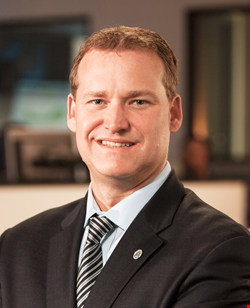
Nuspire Networks, the global managed security services provider, recently announced its 20-year anniversary.
Since 1999, Nuspire has become an industry leading MSSP, expanding its products, services, employees and customer base hiring nearly 200 employees, opening multiple security operations center locations and growing its data center points presence around the world.
Infosecurity spoke to Saylor Frase, Nuspire’s CEO, to learn about the company’s 20-year journey.
With Nuspire now 20 years old, how has the company evolved and changed over the last two decades?
Over the past two decades, Nuspire has evolved along with, and in response to, the ever-changing threat landscape. The early days of securing information technology was a game of ‘leap frog,’ where a vulnerability would be uncovered, and in response, a specific technology widget would be deployed to patch that vulnerability, then the cycle would start again. Years later, we see this paradigm quickly diminished when the volume and complexity of threats skyrocketed.
Today, cyber-threats have turned into such a complex and in-depth problem where the only solution to meet this challenge and have a credible security posture is to incorporate vigilant and constant monitoring, management and response to threats on a network. At Nuspire, we have spent decades refining our systems and cultivating teams of talented IT experts to create the most efficient connection of state-of-the-science cybersecurity technologies and powerful human analytics. The marriage of these two sides of the cybersecurity coin has been a critical component to maintaining a secure network.
What has been Nuspire’s greatest challenges of the last 20 years, and how has the company overcome them?
The first challenge has been the ongoing effort to highlight cybersecurity awareness as a priority for both business leaders and consumers. We understand that security is an immense undertaking for businesses. To meet this need Nuspire, over the last 20 years, has refined services to a service level agreement-focused format that allows us to take complete responsibility of customer networks; managing, monitoring and remediating threats that occur, so organizations can focus on their business.
The second challenge was filling the roles needed to support the growth and expanding need of the marketplace. By 2021, there are projected to be over three million unfilled cybersecurity jobs around the world. Nuspire has embraced the challenge of seeking out the most skilled technical individuals and investing in them to continually grow.
Which of Nuspire’s achievements are you most proud of and why?
Everyone here at Nuspire sees the impact we have on the world and our customers. The threat landscape is changing so rapidly and becoming more complex each and every day, and we pride ourselves on our ability to keep up with those threats. We see how we enable businesses on the largest scale and how we impact users on the ground level. Developing new technologies and techniques to meet the dynamics of the threat landscape drives a deep sense of purpose for everyone at Nuspire, and there is a powerful sense of achievement every day. It is said that a person is measured by the company that they keep, but I believe that a company is measured by the people it keeps, and I am truly proud of the team we have created and what we have and will accomplish.
Looking to the future, what do you think will be the next challenge for both Nuspire and the cybersecurity industry?
As this industry grows and the needs and challenges scale in volume and complexity, we will need to overcome three prime challenges.
First, as cybercrime continues to rise, a big challenge will be continually educating business leaders and users on the risks and impacts that cyber-threats pose, stressing the importance of ensuring crucial information is secure.
Then there’s making the deep commitment to a continuous re-investment into research and development of cutting-edge technologies to keep pace with continued dynamics and complexities faced in securing and monitoring data assets.
Lastly, for the overall cybersecurity industry, a lot of our information and critical systems are interconnected, and that connection will continue to grow even tighter. We’ll see more IoT devices, new malware develop, we’ll be driving connected cars – essentially, we’ll be even more reliant on technology in our daily lives, which will also lead to greater vulnerabilities.
